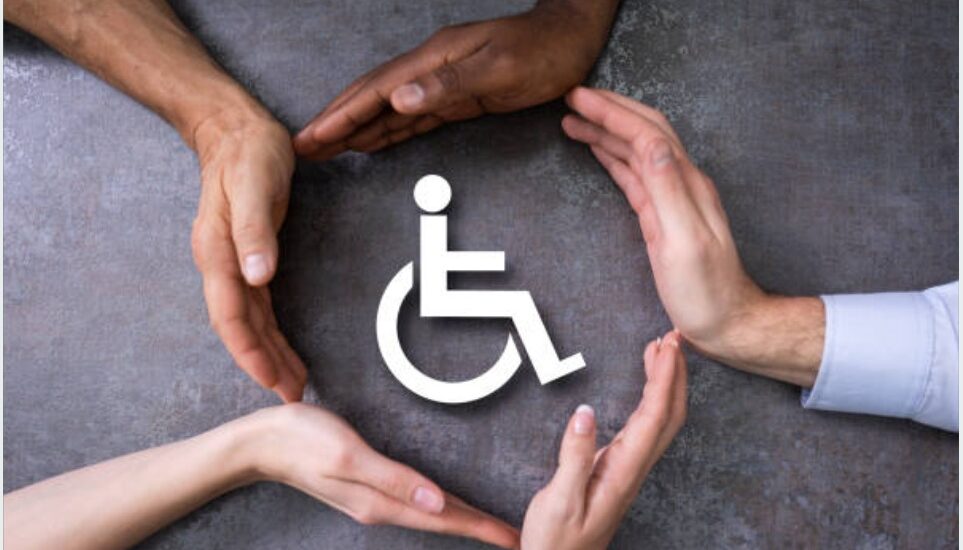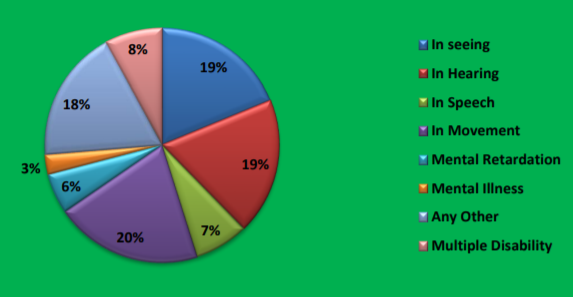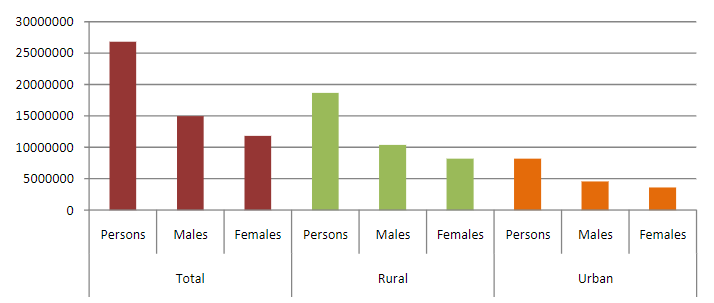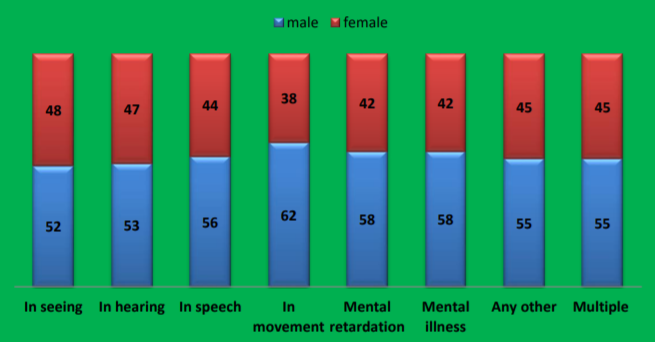“If we are to achieve a richer culture, we must weave one in which each diverse human gift will find a fitting place.”
Margaret Meade
This quote is a befitting one in the case of the individuals from the disabled community. Regardless of their physical, mental or cognitive abilities in an inclusive community, equal opportunities are to be presented to all individuals. Though, India has advanced by leaps and bounds over the years, it still has a long way to go in terms of providing accessible solutions to overcome the difficulties faced by disabled individuals. Hence, it’s high time we had discussed about inclusivity in disability.
According to “The Rights of Persons with Disability Act” (2016), “Person with disability” means a person with long term physical, mental, intellectual or sensory impairment which, in interaction with barriers, hinders his full and effective participation in society equally with others.
Eye opener to inclusivity in disability
One of the greatest barriers for the disabled community in India is the lack of infrastructure and facilities. The much-discussed topic about equality advocates for equal opportunities for people irrespective of sex, caste, creed, religion etc. But people often forget to pay attention to a section of the society which makes a significant number in the population of India – the disabled. A small step could certainly be a stepping stone to a brighter and inclusive tomorrow facilitating purposeful interventions to empower the disabled. For which, measures need to be implemented that goes above and beyond setting up physical infrastructure, as specialized toilets and wheelchair ramps are still a rarity in public spaces.
As a society, we must pledge to achieve inclusivity by eliminating physical, attitudinal and technological barriers for the disabled. Even in the present era of technological innovations, there is a notable gap in the advancements and aids made available for the disabled. When we voice our opinions regarding equality, we hardly touch the experiences that the disabled population is taken away from due to their state of being. It can be as simple as having a wheelchair friendly walkway at a beach. Although, change is on the cards hopefully for a brighter future, as a beach in Chennai has introduced a wheelchair friendly walkway that extended to the shores, so that physically disabled individuals can feel and experiences the waves gently caressing their feet.
Categories of Disability
Disability can be broadly classified into 4 types on the basis of whether the hindrance caused to the individual. Disability is an umbrella term that includes a vast majority of conditions.
The four primary types of disability are: Physical, Mental, Intellectual and Sensory.
- Physical disability: Physical disabilities impact a person’s physical capability and/or mobility or dexterity either temporarily or permanently. It includes people who have lost limbs and have any physical deformity. Acquired brain injury, spinal cord injury, spina bifida, cerebral palsy are also physical disabilities. Paraplegia and Quadriplegia are the most common physical conditions that most people are familiar with. Other forms of physical disability, such as polio (an acquired disease), cerebral palsy (damage to brain tissue during fetal stages) and some genetic conditions can result in loss of mobility. Hence, common physical disabilities are paraplegia, quadriplegia, multiple sclerosis (MS), hemiplegia, cerebral palsy, absent limb/reduced limb function, dystrophy, polio.
- Mental disability: Mental disability or disorders can be classified into dementia, bipolar disorder, schizophrenia and dementia.
- Intellectual disability: Intellectual disability or cognitive disability arises when there limitations to a person’s ability to function at an expected level. When a person’s cognitive functioning is compromised there are certain limitations in one’s communication, self-care and social skills. These limitations can result in slow learning and cognitive development or differently than an average person. For example: autism, down’s syndrome. Down’s syndrome is the commonest identifiable cause of intellectual disability, accounting for around 15-20% of the intellectually disabled population.
- Sensory disability: Sensory disabilities, or sensory impairments, affect one or more of a person’s senses: touch, hearing, sight, taste, smell, or spatial awareness. Common sensory disabilities are visual impairment – blindness or low vision, hearing impairment.
Statistics of Disability
Positively impacting the lives of people by ensuring their overall wellbeing is the basic rule of good governance and development. Targeted interventions are the need of the hour when it comes to the upliftment of people in compromised positions. To get a clear picture of the need of inclusivity in disability, statistical data is essential.
According to the Census 2011, India, 20% of the disabled persons have disability in movement, 19% are with disability in seeing, 19 % are with disability in hearing and 8% has multiple disabilities.
According to Census 2011, in India, out of the 121 Cr population, 2.68 Crore persons are disabled which is approximately 2.21% of the total population. Among the disabled population 56% (1.5 Crores) are males and 44% (1.18 Crores) are females. In the total population, the male and female population are 51% and 49% respectively.
Majority (69%) of the disabled population resided in rural areas (1.86 Crores disabled persons in rural areas and 0.81 Crores in urban areas). In the case of total population also, 69% are from rural areas while the remaining 31% resided in urban areas.
Understand inclusivity in disability better
Accessibility for the disabled is a multi-faceted topic that must be addressed. There is a need for deep level brainstorming to come up with practical methods to tackle the everyday challenges faced by disabled people. Accessibility is just the tip of the iceberg. The simplest example one can cite is that of the accessibility options in public transportation in India. India is a developing country with majority of the disabled individuals residing in rural areas, who may not afford their own vehicle with advanced accessibility features. Hence, they rely on the public transportation.
Now, the big question pops up. In spite of designated seats allowed for the blind, physically handicapped, how do they get on the vehicle in the first place? Suppose, a person using a rehabilitative aid like a wheelchair wants to get on a bus or a train, will he/she be able to do it independently? Is there a ramp arrangement in the vehicle which would enable him/her to get on it? As adopted in some developed countries, a suggestion would be to implement public transit services dedicated to disabled persons. This is for the greater good of the high proportion of individuals with disability in India.
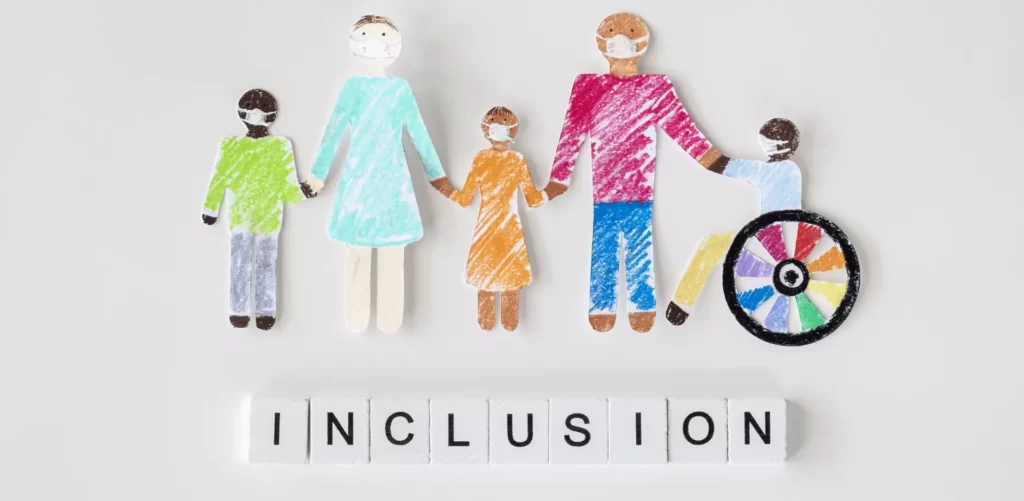
Sources
https://www.aruma.com.au/about-us/about-disability/types-of-disabilities/types-of-physical-disabilities/
https://vikaspedia.in/social-welfare/differently-abled-welfare/disability-in-india
https://www.telegraphindia.com/health/is-the-future-accessible-twitter-asks/cid/1723763
https://www.swavlambancard.gov.in/cms/about-persons-with-disability
http://www.nhfdc.nic.in/upload/nhfdc/Persons_Disabilities_31mar21.pdf


